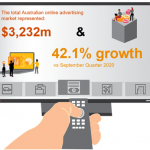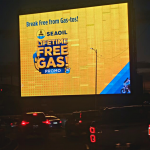“It was the best of times, it was the worst of times, it was the age of wisdom, it was the age of foolishness…”
If you were paying attention in English Literature class, you will know that this is the first line of Dickens’ A Tales of Two Cities.
However, it is also a great analogy for the state of the (largely programmatic driven) advertising industry as we edge closer to the end of the decade. It’s the best of times because we have more technology platforms than ever to help advertisers better connect with their audiences.
We can collect, store and analyse a dizzying array of data and we can more accurately gauge who has seen our ads and how they responded to them.
We are edging ever closer to answering Wanamaker’s famous ‘which 50?’ question and eliminating waste. It is definitely the age of wisdom, because if we use the data wisely, we can identify, segment, target and retarget our customers through the right device at the right time with the right message.
And yet. Foolishness.
All too often our valuable information is wasted or, in worst-case scenarios, abused.
I say it’s wasted because, despite being armed with a wealth of responsibly collected data that tells marketers so much about their target consumers, this marketing kryptonite is often used to serve generic, poor-quality creative that fails to engage and actually ends up annoying consumers.
For example, my data breadcrumbs would clearly point to the fact that I’m a thirty-something, busy, professional woman with no kids. So, if I’ve been looking at certain holiday destinations online it makes zero sense to then be served ads pushing family-friendly images and resorts to me.
At worst this information is abused, because the data kryptonite can be used bluntly to retarget consumers to death, causing alienation and encouraging the use of ad blocking technology.
Who hasn’t been haunted by ads for a pair of shoes that we once searched for (and perhaps even bought) across multiple platforms? This, to me, is the very definition of foolishness.
With the benefit of hindsight, it is easy to see how some of these mistakes have been made.
A step-change in big data capabilities has been genuinely revolutionary for marketing; it means we are getting closer to the one-to-one Holy Grail.
With this excitement, the pursuit and acquisition of excellent data and technology capabilities took precedent for many brands and for many, has been a key point of competitive difference.
Naturally, data capabilities and insight will continue to be important and drive advantage. However, in a world where an increasing number of brands have access to similar sophisticated data and targeting technology, just getting a message to the right target on the right platform based on a consumer’s previous behaviour and interests will no-longer be enough.
The message that they deliver to this audience must also be compelling enough to create a new need and want in the moment.
This means dialling up the creativity in digital marketing executions. Data and tech are wonderful for getting you to who and where you want to be, but it can’t win the hearts and minds of your target audience.
Consumers often develop a deep connection with brands because they feel heard, inspired, aspired, understood, moved or just flat out entertained by what the brand stands for.
In our relentless pursuit of data, this has sometimes been forgotten. Personalisation isn’t the same thing as creativity and is certainly no substitute for it.

As marketers we often talk about consumers being ‘surprised and delighted’ by marketing messages but it is hard to find too many examples of genuinely clever, engaging and unique digital creative executions.
This has to change. It’s time to bring back what great advertising is most known for – being memorable, fun, moving, different and a little crazy.
Add this to the exceptional data and targeting capabilities of programmatically delivered advertising and we will be creating inspiring marketing campaigns that drive business results.
One of the advantages of programmatic is that audiences can be found, segmented and reached in (more or less) real time.
This has meant that agencies and brands have sometimes taken a campaign-by-campaign approach versus beginning with a longer-term strategic and creative vision.
To prioritise creativity, brands need to make sure they define a clear long-term strategy and create the assets to support an always-on strategy that can adapt and evolve over time.
In order to do so, we need to ensure better synergy between all the various partners – the tech partner(s), media agency, client, creative agency – from the very beginning.
It is impossible for creativity to flourish and translate across all screens if the media agency is only briefed at the execution stage. No wonder so many digital assets are iterations of generic off-line campaigns if it’s a last-minute bolt-on.
Technology can also be the friend and enabler of creativity. Newer technologies like Dynamic Creative Optimisation (DCO) allows creative to be optimised using data and technology in real-time.
This means that different creative can be delivered to the target audience depending on variables like customer type, chosen device, weather, location, time, customer value, products viewed, context and so forth.
Going back to the example of holiday ads served to me, this would mean that on a rainy winter day in Sydney, I could receive a message about escaping the dreary weather to disconnect from my hectic life in the sunshine.
That’s much more likely to catch my attention than a generic image from an offline campaign aimed at a broad family demographic.
Online used to be all about performance. This meant that executions were fairly blunt instruments and creativity took a back seat as it suffered from the short-termism I discussed earlier.
Now, the ability to programmatically deliver video, rich media, connected TV means full-funnel marketing is possible.
Technology like dynamic creative optimisation allows marketers to streamline their efforts and create continuous, always-on messaging that combines branding and direct-response elements across all parts of the purchase funnel in a single campaign – or even a single ad unit.
This means there is more of an incentive for brands to invest in clever bespoke creative.
Is it that simple? I think it can be. Embrace your data. Use it responsibly and powerfully. But shift your attention and efforts equally towards creativity. Given the attention it deserves, creativity will help unlock even greater wisdom (and the full potential) for your advertising executions.
source:http://www.marketingmag.com.au
MARKETING Magazine is not responsible for the content of external sites.










